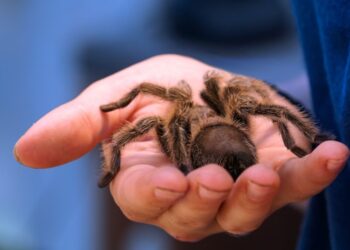Cats are fascinating and mysterious creatures, often leaving their owners wondering what their actions mean. From kneading on blankets to suddenly zooming around the house, every feline behavior has a reason behind it. Understanding cat behavior is essential for strengthening your bond with your pet and ensuring they feel safe and happy. In this guide, we’ll explore the meaning behind common cat actions, vocalizations, and body language to help you better understand your furry friend.
Decoding Cat Body Language
Tail Movements
A cat’s tail is one of the most expressive parts of its body, often indicating their mood and intentions:
- Tail held high: Confidence and friendliness
- Puffed-up tail: Fear or aggression
- Slow swaying tail: Focused attention, often before pouncing
- Wrapped tail around the body: Contentment or relaxation
Ear Positions
Cats use their ears to communicate their emotions and alertness:
- Ears forward: Curiosity and interest
- Ears flattened sideways (“airplane ears”): Nervousness or irritation
- Ears pinned back: Fear or aggression
Eye Contact & Blinking
Cats communicate a lot through their eyes:
- Slow blinking: A sign of trust and affection (try slow blinking back to strengthen your bond)
- Dilated pupils: Excitement, fear, or playfulness
- Narrowed eyes: Contentment or mild irritation
Posture & Movement
A cat’s body language can reveal whether they feel safe, playful, or defensive:
- Arched back with puffed-up fur: Fear or self-defense mode
- Rolling onto their back: A sign of trust, but not always an invitation for belly rubs
- Crouching with tail tucked: Anxiety or submission
Common Cat Behaviors & What They Mean
Kneading
Cats knead with their paws as a comforting behavior, often linked to kittenhood when they kneaded their mother’s belly for milk. This action can signal relaxation, happiness, or an attempt to mark territory with scent glands in their paws.
Head Bumping (Bunting)
When a cat rubs its head against you or furniture, they are marking their territory with scent glands located on their face. This is a sign of affection and trust.
Slow Blinking
Slow blinking at a cat is like giving them a warm smile. If your cat slowly blinks at you, it’s showing love and trust. Responding with a slow blink can reinforce your bond.
Bringing “Gifts” (Dead Prey or Toys)
If your cat brings you a dead mouse, bird, or even a favorite toy, they are expressing their natural hunting instincts. Some believe this is their way of “teaching” you how to hunt, just as a mother cat does with her kittens.
Sudden Zoomies
If your cat suddenly races around the house, don’t be alarmed. This burst of energy, known as “zoomies,” is a way for cats to release pent-up energy, often occurring after a nap or during playtime.
Scratching Furniture
Scratching is a natural instinct for cats, helping them mark territory, stretch their muscles, and maintain healthy claws. Providing scratching posts can redirect this behavior from furniture.
Understanding Cat Vocalizations
Meowing
Unlike wild cats, domesticated cats meow primarily to communicate with humans. Different types of meows may indicate hunger, attention-seeking, or a desire to go outside.
Purring
Purring is usually a sign of contentment, but it can also serve as a self-soothing mechanism when a cat is anxious or unwell. If your cat purrs while hiding or acting unusual, it’s worth checking for signs of discomfort.
Hissing & Growling
A cat that hisses or growls is warning others to stay away. This behavior is usually triggered by fear, aggression, or territorial disputes. Give your cat space if they exhibit these signs.
Chirping & Trilling
These sounds are often used by mother cats to communicate with their kittens. If your cat chirps at you, they might be excited or trying to get your attention.
Behavioral Issues & How to Address Them
Litter Box Problems
If your cat suddenly stops using the litter box, potential causes include stress, medical issues, or an unclean box. Ensure the litter box is clean, placed in a quiet location, and meets your cat’s preferences for litter type.
Aggression & Overstimulation
Cats can become overstimulated during petting or play, leading to sudden bites or swipes. Pay attention to their body language, such as twitching tails or pinned-back ears, and stop interactions before they escalate.
Excessive Meowing
Some cats are naturally more vocal, but excessive meowing can indicate hunger, boredom, or an underlying health issue. Ensuring they have enough mental and physical stimulation can help reduce unnecessary vocalization.
Hiding or Avoiding People
Cats may hide when they feel scared, stressed, or unwell. Creating a calm and secure environment, along with gradual socialization, can help build their confidence.
Conclusion
Understanding cat behavior is key to building a trusting and loving relationship with your feline friend. By paying attention to their body language, vocalizations, and common habits, you can better meet their needs and ensure their well-being. Cats have unique ways of communicating, and with patience and observation, you’ll soon become fluent in your pet’s special language.





